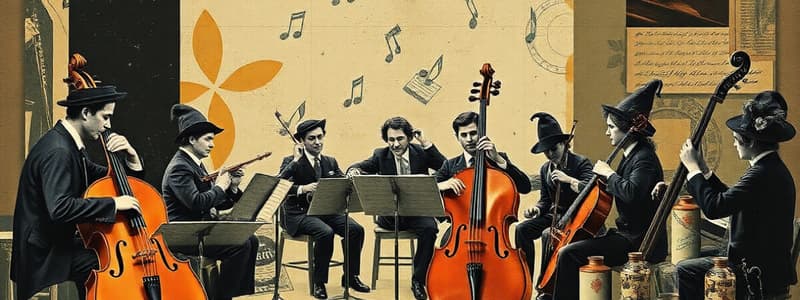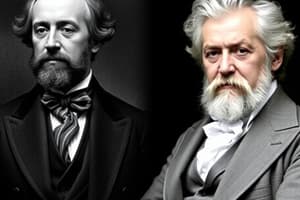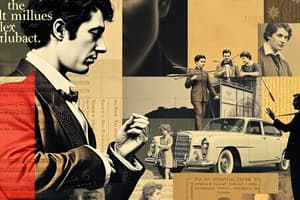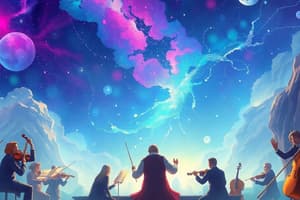Podcast
Questions and Answers
In Berlioz's Symphonie Fantastique, which instrument depicts the artist's final thoughts before execution?
In Berlioz's Symphonie Fantastique, which instrument depicts the artist's final thoughts before execution?
- Cor Anglais
- Violin
- Clarinet (correct)
- Oboe
Whose work did Richard Strauss revise to encompass newer instruments?
Whose work did Richard Strauss revise to encompass newer instruments?
- Franz Liszt
- Hector Berlioz (correct)
- Felix Mendelssohn
- Johannes Brahms
Which movement of Symphonie Fantastique utilizes offstage instruments to create a sense of distance?
Which movement of Symphonie Fantastique utilizes offstage instruments to create a sense of distance?
- Dream of A Witches' Sabbath
- Reveries - Passions
- March to the Scaffold
- Scene in the Country (correct)
How did Berlioz create the sound of a thunderstorm in 'Scene in the Country'?
How did Berlioz create the sound of a thunderstorm in 'Scene in the Country'?
What unusual playing technique is employed to evoke terror in 'Dream of A Witches' Sabbath'?
What unusual playing technique is employed to evoke terror in 'Dream of A Witches' Sabbath'?
Which instrument signifies the tolling of a funeral bell in the 'Dream of A Witches' Sabbath'?
Which instrument signifies the tolling of a funeral bell in the 'Dream of A Witches' Sabbath'?
What year was Berlioz's original treatise on instrumentation published?
What year was Berlioz's original treatise on instrumentation published?
Which instruments contribute to the 'March to the Scaffold'?
Which instruments contribute to the 'March to the Scaffold'?
What signified the fall of the guillotine blade in 'March to the Scaffold'?
What signified the fall of the guillotine blade in 'March to the Scaffold'?
Flashcards
Hector Berlioz
Hector Berlioz
A French composer known for his orchestration techniques and innovative music forms.
Orchestration
Orchestration
The art of assigning instruments to music in a way that enhances its sound and impact.
Treatise on Instrumentation
Treatise on Instrumentation
Berlioz's 1844 publication detailing instrument ranges and qualities.
Movement 3: Scene in the Country
Movement 3: Scene in the Country
Signup and view all the flashcards
Movement 4: March to the Scaffold
Movement 4: March to the Scaffold
Signup and view all the flashcards
Movement 5: Dream of A Witches' Sabbath
Movement 5: Dream of A Witches' Sabbath
Signup and view all the flashcards
Richard Strauss's Revision
Richard Strauss's Revision
Signup and view all the flashcards
Cor anglais
Cor anglais
Signup and view all the flashcards
Tubular bells
Tubular bells
Signup and view all the flashcards
Study Notes
Hector Berlioz's Orchestration
- Berlioz was self-taught in music and studied other composers' works, intuitively understanding instrument combinations.
- He wrote about instrument range and quality, and the role each instrument played in the orchestra.
- His Treatise on Instrumentation was published in 1844 and revised by Richard Strauss in 1904 to include modern instruments.
- Movement 3 depicted an artist wandering alone in the countryside, with sounds of two shepherds talking in the distance, and timpani parts representing a thunderstorm.
- Movement 4 featured a march to the scaffold, with the artist poisoning himself and dreaming of being executed for murdering love, using timpani and blazing horns. The solo clarinet plays the last thoughts of the artist while the guillotine falls.
- Movement 5 showed the artist dreaming of a funeral amid dancing witches and monsters. Violins convey terror and an eerie effect. Tubular bells represent the tolling funeral bell.
Studying That Suits You
Use AI to generate personalized quizzes and flashcards to suit your learning preferences.




